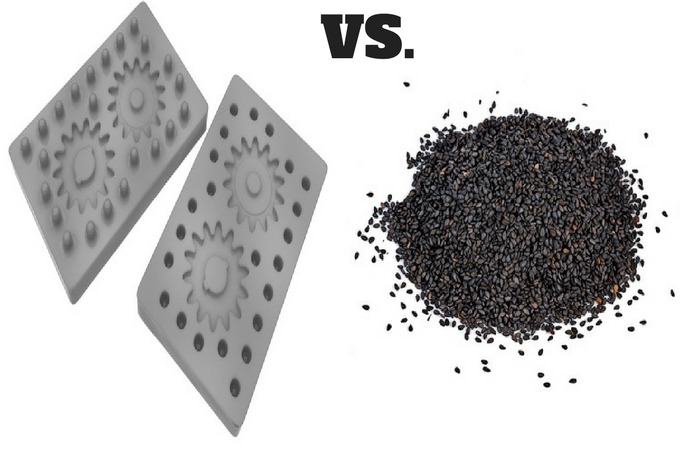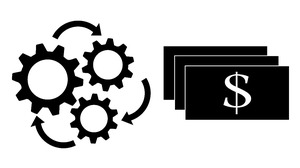Comparing the benefits and drawbacks of two different manufacturing processes can be one of the best ways to illustrate the importance of proper process selection for a project. Urethane casting vs. plastic injection molding, for instance — two processes that are, on the surface, relatively similar — can yield vastly different results depending on your requirements and expectations. To start, let’s look at the difference between casting and molding.
 Differences Between Casting and Molding
Differences Between Casting and Molding
As mentioned above, casting and molding are generally similar processes. The difference lies in the details, especially as they relate to manufacturing practices. Plastic injection molding is a process of using pressurized machinery to fill mold cavities. With casting, the material is generally poured into a mold rather than injected at high pressure. From there, we return to similarities: the heated, liquefied material is allowed to cool and harden, and is then ejected or released from the mold or cast.
Looking at other specifics of the two processes, the materials used for molding vs. casting are typically different. Molds used for injection molding are typically created from a metal, such as hardened tool steel, or, for some lower volume applications, softer metals like aluminum. Casting molds, on the other hand, are usually made from materials such as silicone rubber. We’ll talk more about the impact of this difference in a bit.
Aside from the materials used to create a mold or a cast, the materials that are suited to each process are different, as well. Injection molding will typically use production-grade plastics such as PVC, ABS, polycarbonate and others. Casting is better suited for materials that can mimic the qualities of these plastics at low volumes, like urethanes.
In terms of quantities, injection molding tooling usually features a large number of cavities in each mold, resulting in higher quantities produced from each cycle. The nature of casting means that typically only a few (or as few as one) pieces are produced at once.
Finally, let’s look at how tooling is manufactured for each process. Urethane casts are usually made by molding a 3D printed model of the finished part, whereas injection molding tools are machined via CNC grinding, milling and other processes.
Urethane Casting vs. Plastic Injection Molding
Now that we know some differences between the two processes, we can look more closely at their implications. From there, we can see the optimal situations to make use of each.
 Upfront tooling costs. Injection molds are a huge investment, though one that typically pays for itself over a long service life. Urethane casts, on the other hand, usually can be produced for under $2,000 (as opposed to tens or hundreds of thousands of dollars for steel or other metal injection molds). We’ll talk more about differences in quantity and performance for each in the next point, but for now, understand that if you need to keep upfront costs low, urethane casting is the better choice.
Upfront tooling costs. Injection molds are a huge investment, though one that typically pays for itself over a long service life. Urethane casts, on the other hand, usually can be produced for under $2,000 (as opposed to tens or hundreds of thousands of dollars for steel or other metal injection molds). We’ll talk more about differences in quantity and performance for each in the next point, but for now, understand that if you need to keep upfront costs low, urethane casting is the better choice.
Quantity and production volume. If you’re looking for a mold for prototypes or low-volume runs, or you need to produce only a few parts at a time, a urethane mold is the better choice. For high-volume production quantities, the quality and lifespan of a tool steel mold will generally yield the better return on investment. Hand in hand with the point above, it’s best to weigh your production volume needs against the amount of investment you’re willing and able to make at your stage of product development.
Material costs. The production-quality plastics typically used in injection molding will require a greater expenditure than the urethanes used in urethane casting. If you require only a prototype or a run of a few pieces, you’re likely better off choosing urethane casting. For longer runs, or applications where certain material properties are critical to the performance of the part, you’ll need to choose the appropriate plastic for your needs.
 Lead times. Tool steel injection molds require more intricate and extensive machining to create, and usually are not ready for several weeks — a typical lead time for a mold might be two months. Urethane casts, on the other hand, can be produced in less time, usually requiring just a 3D printed model to be produced and a soft mold to be created around it.
Lead times. Tool steel injection molds require more intricate and extensive machining to create, and usually are not ready for several weeks — a typical lead time for a mold might be two months. Urethane casts, on the other hand, can be produced in less time, usually requiring just a 3D printed model to be produced and a soft mold to be created around it.
Per-part cost vs. overall cost. When you’re looking the bottom line and ROI,
per-part cost is a very useful benchmark to determine the efficiency of your process. In general, per-part costs for urethane casting will be higher than for injection molding, due primarily to the lower volume of parts created. Overall costs, however, are typically lower for urethane casting because of lower tooling and material costs.
Development stage suitability. Between urethane casting and injection molding, there is no one “superior process.” Each one is, however, better suited for a different stage of your product’s development. For prototyping, urethane casting will almost always be the better choice, unless there is a specific need to use injection molding and a particular material at the prototype stage. Often, it will be cost prohibitive to iterate by modifying an injection molding tool, so a different process will almost always be a more cost-effective choice. For high-volume production runs, the durability and quality of tool steel molds cannot be mimicked by other materials or processes. In quantities of 100,000 and up, you simply will not see the ROI with another process that you will with a steel mold, and will begin encountering repair and replacement costs much sooner.
Preparation and education are two of the best ways to maximize your bottom line and the efficiency of your product development and production processes. Knowing what to expect at each step of the way is a highly effective tool in making informed choices — the types of choices that lead to a successful product. Understanding that one process is usually not inherently “better” than another, but may be better for your specific needs, is a key component of that knowledge — and we hope that this overview has helped you understand how to make those distinctions.


